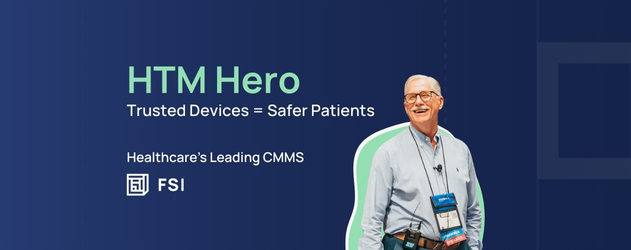This resource page is to help Biomedical Equipment Technicians / Clinical Engineers find resources to help them become the best BMET they can be. These resources include videos of BMET & HTM channels, links to good databases for medical equipment manuals, regulatory information, CMMS reviews, and more!
- Associations & Societies
- Biomed Program Listing
- Career Path After BMET
- Certifications
- CMMS Databases
- EOL Devices
- Finding Quality Third Party Repair Company
- Interview Questions
- Manuals
- Top Medical Equipment Manufacturers
- Troubleshooting
- Videos
Biomedical technicians (biomed techs) play a vital role in healthcare by ensuring that medical equipment functions safely and effectively. Their responsibilities range from equipment maintenance and repair to compliance with regulatory standards. To enhance their skills, efficiency, and overall effectiveness in their roles, several resources and practices are invaluable. Here’s a detailed explanation of the importance of biomedical technicians joining associations, having Computerized Maintenance Management Systems (CMMS) reviews, an End-of-Life (EOL) device list, manuals, and educational videos:
1. Joining Associations
Importance:
- Networking Opportunities: Associations provide biomed techs with the chance to connect with peers, industry experts, and potential employers. Networking can lead to mentorship opportunities, job prospects, and collaborations.
- Access to Resources: Membership often includes access to a wealth of resources, such as technical publications, industry reports, and best practices that can enhance knowledge and performance.
- Professional Development: Many associations offer training programs, workshops, and conferences that keep technicians updated on the latest technologies and regulatory changes.
- Certification and Credibility: Associations may provide pathways to certification, which can enhance a technician’s credibility and career prospects within the healthcare field.
- Advocacy: Professional organizations advocate for the interests of biomedical technicians, working to improve working conditions, standards, and practices in the field.
2. CMMS Reviews
Importance:
- Efficiency in Maintenance: A Computerized Maintenance Management System (CMMS) helps streamline maintenance processes, track work orders, and manage equipment inventory. Regular reviews ensure that the system is functioning optimally.
- Data-Driven Decisions: CMMS reviews provide insights into equipment performance, maintenance history, and service trends, enabling technicians to make informed decisions about repairs and replacements.
- Regulatory Compliance: A well-maintained CMMS helps ensure compliance with regulatory requirements by keeping accurate records of maintenance and inspections.
- Resource Management: It aids in managing labor, time, and parts inventory, allowing biomed techs to allocate resources effectively and reduce downtime for critical medical devices.
- Predictive Maintenance: By analyzing data from the CMMS, technicians can identify patterns and predict when maintenance will be required, thus preventing unexpected equipment failures.
3. End-of-Life (EOL) Device List
Importance:
- Planning for Replacement: Having an EOL device list allows technicians to plan for the replacement of outdated or non-compliant equipment, ensuring that the facility maintains a standard of care.
- Budgeting: It aids in financial planning and budgeting for new equipment purchases, preventing unexpected expenditures.
- Risk Management: Knowledge of EOL devices helps mitigate risks associated with using outdated equipment that may not meet current safety or performance standards.
- Compliance and Safety: Ensuring that EOL devices are identified and replaced helps maintain compliance with regulatory requirements, enhancing patient safety.
- Inventory Management: An EOL list aids in managing inventory effectively, ensuring that equipment is replaced before it poses a risk to patient care.
4. Manuals
Importance:
- Reference for Operations and Repairs: Manuals provide essential information on the proper operation, maintenance, and troubleshooting of medical devices, serving as a critical resource for technicians.
- Standardization of Procedures: They help establish standardized procedures for equipment handling, maintenance, and repair, ensuring consistency in practices across the organization.
- Training Resource: Manuals can be used as training tools for new technicians, facilitating onboarding and enhancing knowledge about specific equipment.
- Safety Protocols: Manuals typically include safety guidelines and precautions, helping technicians understand the risks associated with the equipment they are working on.
- Regulatory Compliance: Having access to equipment manuals aids in compliance with regulatory standards by ensuring that proper procedures are followed during maintenance and operation.
5. Educational Videos
Importance:
- Visual Learning: Educational videos cater to visual learners, making complex procedures and concepts easier to understand. They can enhance training by demonstrating proper techniques for equipment use and maintenance.
- Up-to-Date Information: Videos can provide updates on the latest technologies, industry practices, and troubleshooting techniques, ensuring that technicians stay current with advancements in the field.
- Accessible Training: On-demand access to educational videos allows technicians to learn at their own pace and revisit complex topics as needed, reinforcing their skills and knowledge.
- Real-World Applications: Videos often showcase real-world scenarios and applications, helping technicians understand how to apply theoretical knowledge in practical situations.
- Collaboration and Sharing: Technicians can share educational videos with colleagues, fostering a collaborative learning environment and enhancing overall team competency.
Conclusion
Biomedical technicians serve as the backbone of healthcare technology management, directly influencing patient care and safety. By engaging with professional associations, leveraging CMMS reviews, maintaining an EOL device list, utilizing manuals, and accessing educational videos, technicians can enhance their skills, efficiency, and effectiveness in their roles. These resources not only contribute to individual professional development but also support the broader goals of healthcare facilities in providing high-quality care to patients. Investing time and resources in these areas ultimately leads to improved equipment management, enhanced patient safety, and better healthcare outcomes.

